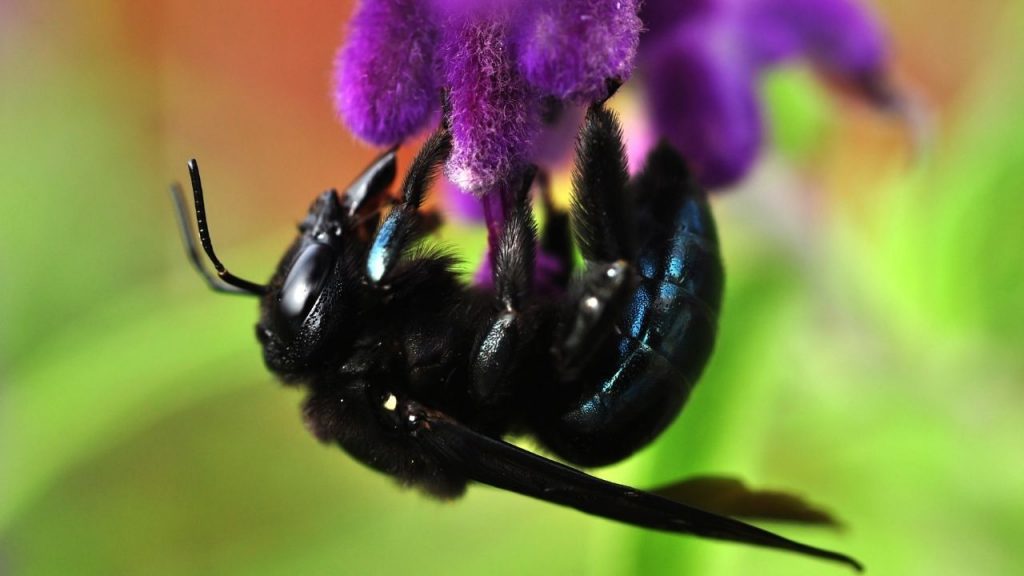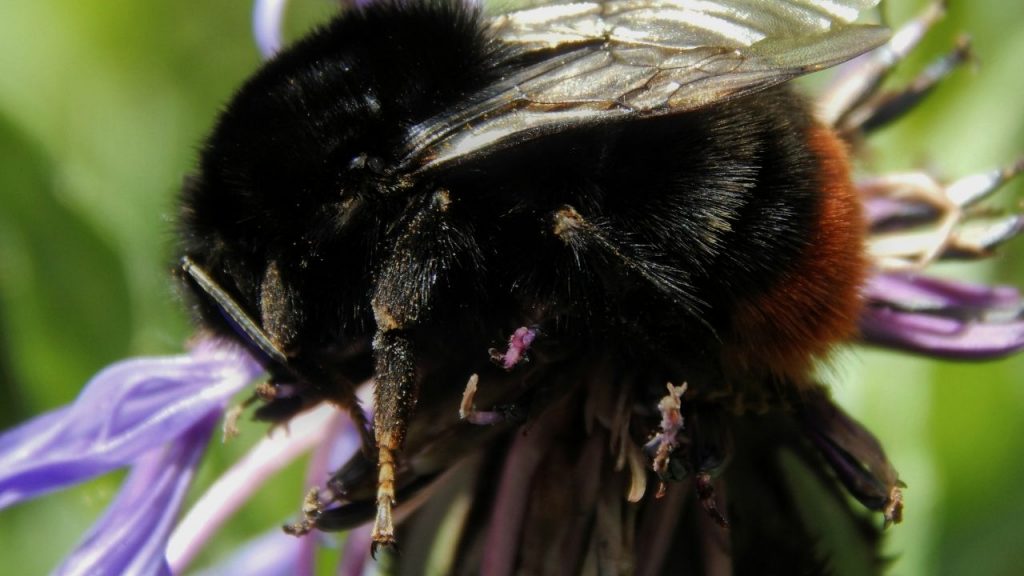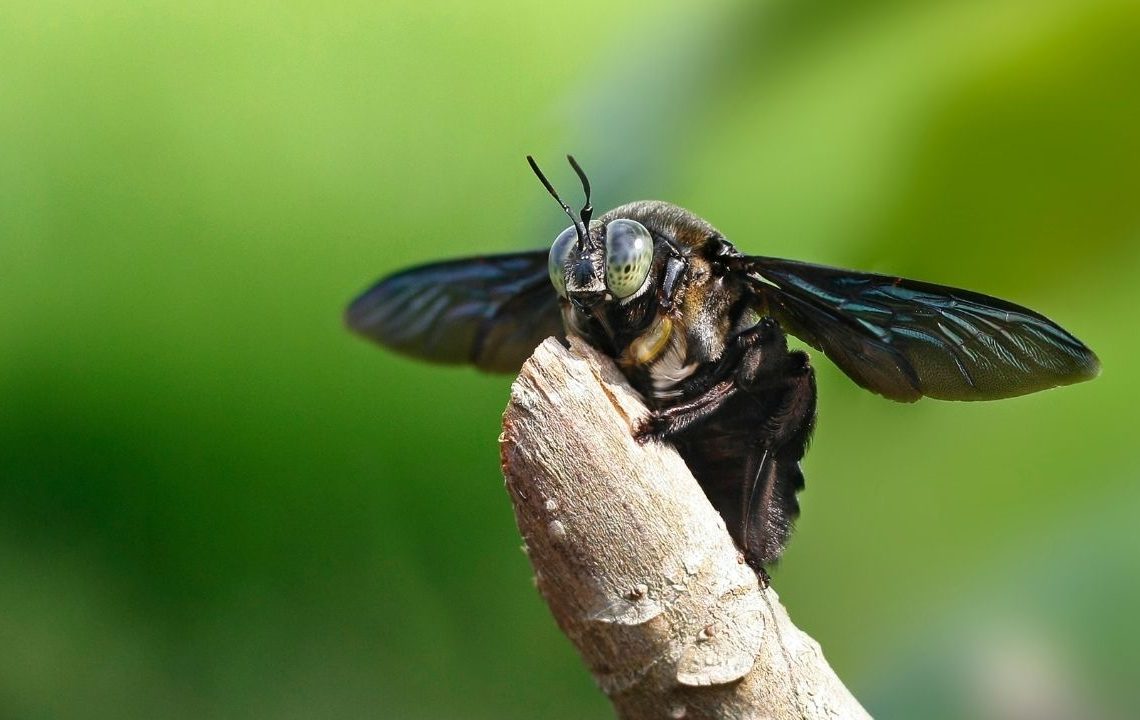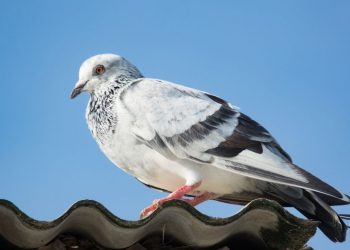Have you ever heard of Black Carpenter bees that aren’t interested in making honey and take pleasure in drilling holes in wood? The Carpenter bees or big black bee from the USA belong to a family of bees that takes particular interest in penetrating through the woods.
Unlike other bee family members like honeybees or big black bumble bee that thrives in colonies, carpenter bees prefer to build individual nests in trees and other wooden objects.
Where can you find Black Carpenter Bees?
Black carpenter bees come over as the largest species of bees in the USA, and you can easily trace them around the Greater Houston area. They possess the same appearance as the bumblebees yet you can recognize them with their Dark black color.
Most people fails to differentiate between Carpenter bees and Bumble bees. Yet, there is a significant difference in the looks and appearance of these species from bee family. While big black bumble bee sports a dark and hairy abdomen, the black carpenter bees bring along a bare and glossy abdomen. Yet, just like any other large black bee, they also trigger the pollination process in plants.
Carpenter bees are also deemed as solitary bees as they choose to live in small nests that are completely different from the social structure formed by other bees. That said, the Female big black bee prefers to live in small groups and further tend to build their nest in a close proximity to each other. This is how they invade the spot while multiplying in numbers.
Carpenter bees like to drill tunnels in wood, particularly worn and bare wood. So, they build their nest around such spots only. As a matter of fact, the nest of a large black bee can be ten inches long. So, if you live nearby their habitat, you must stay extra careful and cautious about all the wooden stuff within your premises.
Black carpenter bees are particularly rampant in most of the southern and southwestern states in USA. So, if you want to have a glance on their habitat, you can travel across Greater Houston and its nearby areas.
What is the Lifespan of Big Black Bee?
Carpenter bees are blessed with a bigger lifespan than other species from the bees’ family. Usually, they live around for as long as three years. Moreover, these giant black bees have smaller broods in comparison to big black bumblebee. Surprisingly, the younger big black bee shifts into existing nests to save on all the hard work in creating new habitats. On the other side, the Older bees are not that lucky so had to put in all the big work in the same regard.
Black carpenter bees are mostly active during the spring and summer season. You can easily locate them during the April and May month when the adult bees come out of their broods in the quest of establishing their nests.
However, male bees are more prevalent in summers due to their tendency to chase flying insects and other bees that have left their nests. They go inactive in the winter season and mostly facilitate the pollination process while being out of their nests.
Moreover, you can find the female big black bee living with their daughters or sisters to create a desired social group. They usually bring tiny pieces of wood to outline slight partitions between the spaces in their nest. Besides, you can often see those boring holes in bare and worn wood pieces. As their Nests are highly sustainable and attractive, you can see Woodpeckers doing a lot of damage to their habitats.
What are the Main Characteristics of The Big Black Bee?
Due to their identical features, it is quite challenging for a person to differentiate between the various species of the Black carpenter bees. Most of the bees boast a black appearance, with few coming out with yellow or white pubescence. The large black and yellow bees may confuse you at times due to their looks and appearance.
Carpenter bees have small mouthparts. So, besides being a good wood driller, they often perform their critical roles in pollinating most of the open-faced flowers. The Big black bee also comes over as a vital pollinator of flowers that boasts various lids.
Yet, you may often find these bees robbing the nectar while splitting the sides of flowers with deep corollae. Xylocopa virginica is one such species from the Black carpenter bee family that boasts nectar robbing behavior. Due to their shorter labia, these bees find it challenging to reach up to the nectar without slitting the long-tubed flowers.
They eventually miss contact with the anthers while resulting in no pollination. In other plants that don’t come along with any defense mechanism, these Black carpenter bees also minimize the fruit and seed production.

What are the Common Signs of a Carpenter Bee Infestation?
You can easily track and locate a carpenter bee infestation given their round and smooth appearance from outside. So, if you are looking to save your home or office property from any damage by the black carpenter bees, you must carry out a regular inspection and check for the existence of any such holes around a wooden object.
Most of the big black bee prefers bare and exposed wood. So, any kind of painted or stained wood may not catch their attention. Yet, they can attack the same stained or painted wood in the absence of a desired habitat.
Carpenter bees can pose a big threat to your property and if left untreated, they can cause some serious damage to its shape and appearance. This is the biggest reason why these giant black bees often choose abandoned or vacant properties for some good time. Furthermore, the large larvae sneaking into their tunnels often catch the attention of woodpeckers. So, besides getting some big dent by the big black bumble bee, your property is exposed to some serious threat from woodpeckers at the same time.
Black Carpenter Bees vs Big Black Bumblebee!
The big black bumble bee comes over as a social bee that thrives in an underground colony. The colony isn’t as big as that of Honey bees and can hold up to as many as 50 bumblebees. Living in an underground colony makes them stay away from heat and direct sunlight.
Their habitats in regions with moderate temperatures only thrive for just one season. The large black bee, also known as the queen bee, eats continually during the season. This further allows her to grab some quick weight that further facilitates her hibernation period during the winter season.
With the onset of the spring season, she will come out and starts working on a new colony. The female big black bee, also known as the working bee, indulges herself in the process of procuring nectar and building the colony. The male bumble bee, named drone, further put through their contribution in the same task.
The black carpenter bees prefer not to be living in a colony. So, they will look forward to a male carpenter bee for mating and nesting process. The female bumble bee usually spends her day while preparing the nest for the family.
She further gets all the big support from the mandibles located on the front of her head. These mandibles vibrate rapidly once getting in contact with wood grains. So, they can easily create and amazing and sustainable nest within a short period of time.
The male carpenter bees, on the contrary, spend most of their time while protecting the female bees and their nest. Once the nest is fully prepared, the female will start up with the process of laying eggs. She will lay every egg in a separate chamber while packing them with a sufficient amount of nectar. Unluckily, both the male and female giant black bees die in the nest after completing the task. The born carpenter bees, once gaining adulthood, feeds on the nectar left by the female big black bee.
Do Black Carpenter Bees Sting?
You may hardly find a big black bee stinging a person in real. Carpenter bees are very protective, so you can only expect them to defend their nests during any unwanted circumstance. Yet, this defense mechanism is just a mere show by this group of bees.
As mentioned above, the male carpenter bee is responsible for defending his habitat in the first place. However, these large black and yellow bees cannot sting due to the absence of a stinger. So, you can only see them coming and buzz up on your face, without any serious threat upfront.
As you go past this first line of defense, there is a slight chance of you being stung by the female carpenter bees. Even though the chances are very low, they may protect their habitat from any external threat.
Unlike honey bees, Female black carpenter bees come over with soft stingers and hold the capability of stinging more than once. On the contrary, the honey bees sport a pointed stinger that makes them get stuck with whatever object or entity they attack upon. The stings contain venom named melittin that can easily cause swelling, itching or pain even if you remove the sting. So, you have to be extra conscious and careful while going near the big black bee’s nest.
Just in case you are a bit confused about the type of giant black bees hovering around you, try following them till their habitat. Black carpenter bees usually stay around an exposed and worn out wooden object. The big black bumble bee, on the other side, is mostly found underground.

How to get Rid of the Big Black Bee Infestation?
It’s tough for one to get rid of Black carpenter bees infestation. So, the best idea here is to go for a full proof prevention strategy.Carpenter bees tend to drill holes in the wooden blocks or objects that receive direct heat and sunlight.
They may also find a habitat in bare wood under decks or shades. Hence, it’s always the right idea to varnish or paints these wooden objects to skip the attention of those giant black bees. As you go for it, try using fresh paint, as that comes highly unattractive to these carpenter bees.
Gauge or seal every hole within random wooden blocks or objects around you. The Carpenter Bees mostly watch out for cracks or openings that are feasible for their nests. Hence, you can always prevent them from brooding by blocking these spots.
These Carpenter Bees often reuse the holes created in the previous season. Check out for any such spot in the fall before a big black bee makes her nest around. The idea here is to prevent them from making a nest in the first place.
Even though you don’t have the time to paint or varnish these spare wood blocks or objects, you can use a good quality residual spray to block their habitat. Now, as you do that, be very careful about the timing of the entire procedure.
The Carpenter bees emerge around the early summer or late spring season. So, you got to finish up with the task before that. The impact of these residual sprays would last for around 2-3 months. Hence, you may need to repeat the process at regular intervals.
The larvae of these Black carpenter bees often attract the woodpecker. Therefore, you always need to ensure that the residual spray has been appropriately used during the prevention task. If you prefer a non-chemical approach to prevent the infestation of carpenter bee control, you can go for a Bee Trap.
The trap is specially crafted and designed to catch hold of these large black and yellow bees. If you have an existing carpenter bee infestation at your place, hang this bee trap right over the nests. In other cases, hanging the traps at the corners or peaks is highly recommended.
Conclusion
You may find it hard to distinguish between a big black bee and a bumblebee. Yet, you can recognize these black carpenter bees by black and yellow patterns on their body. Besides, if you want to prevent them from brooding around your vicinity, try using the aforementioned alternatives.







